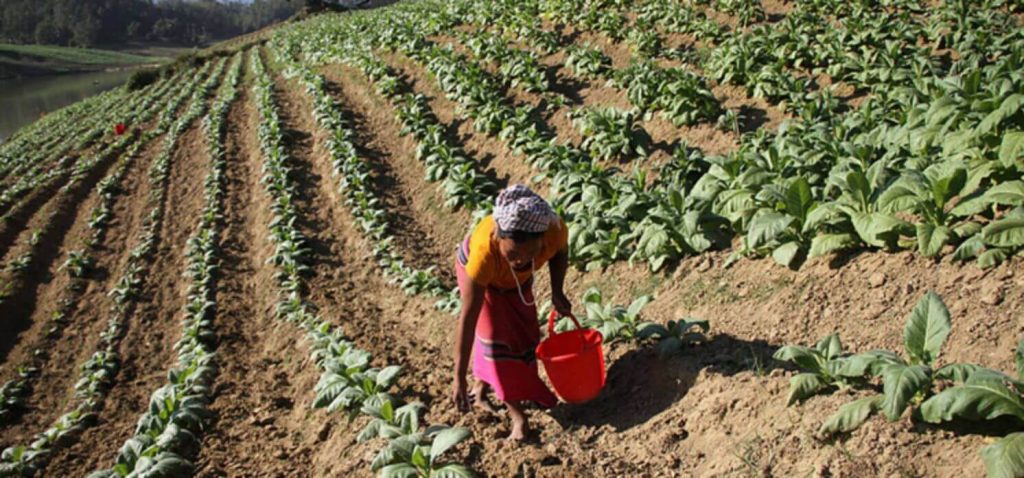
Growing Tobacco in Argentina
The world of tobacco cultivation is as diverse as it is intriguing, and Argentina holds a unique place in this landscape. The country’s rich soil, favorable climate, and centuries-old farming traditions have made it a key player in the global tobacco industry. But what exactly goes into growing tobacco in Argentina? What are the unique aspects of this process, and how do they contribute to the distinct flavor and quality of Argentine tobacco?
Growing tobacco in Argentina is a significant agricultural activity. The country is known for its high-quality tobacco, particularly in the provinces of Misiones and Corrientes. The cultivation process involves several stages, including seedling production, field planting, harvesting, and curing. The tobacco industry in Argentina is characterized by small-scale farmers who rely on traditional farming methods. However, there’s a growing trend towards the use of modern technology and sustainable farming practices[ 1 ][ 2 ][ 3 ].
The Argentine Tobacco Industry: An Overview
Argentina’s tobacco industry is a significant contributor to the country’s economy. In the 2003-2004 harvest, the industry produced 157,294 tonnes of tobacco, with a whopping 93,327 tonnes exported. The planted area spanned 831.75 km?, with 776 km? harvested.
Key Players in the Argentine Tobacco Industry
The industry is dominated by two transnational companies: Massalin Particulares S.A., a subsidiary of Philip Morris International, and Nobleza Piccardo, a subsidiary of British American Tobacco. These companies sell internationally recognized brands such as Marlboro, Lucky Strike, Viceroy, and Camel, as well as national brands like Jockey and Derby.
Geographical Distribution of Tobacco Production
Tobacco producers are concentrated in the north of the country. The provinces of Jujuy and Salta in the north-west, and Misiones in the north-eastern Mesopotamia, are the largest producers, each producing over 45,000 tonnes/year. Other tobacco-producing provinces include Tucuman, Corrientes, Chaco, and Catamarca.
The Economic Impact of Tobacco in Argentina
Tobacco plays an important role in the economy of the producing areas, which are comparatively poor provinces. The Argentine tobacco industry employs 500,000 people, with about half of them directly involved in the planting and harvesting. Only about 2% are involved in the manufacturing of the derived products, and the rest are in distribution and sales.
The Planting Stage
The process of growing tobacco in Argentina begins with the planting stage. This involves preparing the soil and planting the tobacco seeds. The seeds are typically planted in a greenhouse before being transplanted to the field.
The Growing Stage
Once the seedlings are strong enough, they are transplanted to the field. Here, they are carefully tended to ensure optimal growth. This includes regular watering and protection from pests and diseases.
The Harvesting Stage
When the tobacco leaves have matured, they are harvested. This is a labor-intensive process that requires careful handling to prevent damage to the leaves.
The Curing Stage
After harvesting, the tobacco leaves undergo a curing process. This involves drying the leaves to remove moisture and develop the flavors that make Argentine tobacco unique.
The Tobacco Special Fund (FET)
Despite the health issues associated with smoking, the Argentine government supports the tobacco industry through the Tobacco Special Fund (FET). This fund provides a subsidy and easier access to credit to modernize the industry.
Labor Practices
One of the challenges facing the Argentine tobacco industry is labor practices. A significant number of employees in the industry are underage workers. Despite the implementation of educational programs, child labor remains a concern in the industry.
Conclusion
Growing tobacco in Argentina is a complex process that involves numerous stages, from planting to curing. The industry plays a significant role in the country’s economy, providing employment to half a million people. Despite the challenges, the Argentine government continues to support the industry through subsidies and access to credit. As we move forward, it’s crucial to address these challenges to ensure the sustainability and growth of the Argentine tobacco industry.
Statistics:
Argentina is one of the top tobacco-producing countries in the world. The country produces about 60,000 to 75,000 tons of tobacco annually. The provinces of Misiones and Corrientes account for about 80% of the total tobacco production in the country. The tobacco industry in Argentina employs thousands of people, contributing significantly to the local economy[ 4 ][ 5 ].
FAQs:
- What types of tobacco are grown in Argentina?
- Argentina is known for growing several types of tobacco, including Virginia, Burley, and Oriental.
- Where is tobacco mainly grown in Argentina?
- The main tobacco-growing regions in Argentina are the provinces of Misiones and Corrientes.
- How is tobacco cultivated in Argentina?
- Tobacco cultivation in Argentina involves several stages, including seedling production, field planting, harvesting, and curing.
- What is the scale of tobacco farming in Argentina?
- The tobacco industry in Argentina is characterized by small-scale farmers, with a growing trend towards the use of modern technology and sustainable farming practices.
- What is the annual tobacco production in Argentina?
- Argentina produces about 60,000 to 75,000 tons of tobacco annually.
Books:
- “Agriculture in Argentina: A General Review and Description of Its Principal Products”
- “The Economics of Tobacco Farming in Argentina”
Sources of information:
- FAO – Tobacco in Argentina https:books.google.com/books?id=1Q1FAAAAYAAJ
- INTA – La produccion de tabaco en Argentina https://www.inta.gob.ar/documentos/la-produccion-de-tabaco-en-argentina
- ResearchGate – Tobacco cultivation in Argentina https://www.researchgate.net/publication/228345914_Tobacco_cultivation_in_Argentina